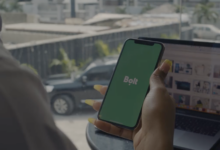
In today’s fast-moving cities, ride-hailing and delivery services are no longer a luxury—they’re a daily utility. But with convenience comes responsibility. For Bolt, one of the leading mobility platforms in Africa, Europe, and beyond, that responsibility is safety.
At the recent Bolt Safety Summit and Training Workshop in Nairobi, the company shared new insights into how it’s building a more secure experience for drivers and passengers alike. From smart tech upgrades to stronger partnerships with law enforcement, Bolt ride-hailing safety features are entering a new era.
Rethinking Safety: Smarter Pairing for Better Experiences
One standout topic at the summit was Bolt’s experimental approach to user pairing—an effort that blends demographic insights with safety planning. By matching certain rider and driver profiles—like pairing younger women with older, more experienced drivers—Bolt hopes to reduce risky encounters before they happen.
The goal? Make every trip feel safer without overengineering the process. While the company hasn’t published exact data or algorithms behind the system, the idea reflects a larger shift: using real-world human patterns to influence digital safety decisions.
A Closer Look at Bolt Ride-Hailing Safety Features
Bolt isn’t just relying on user matching. It has built an entire framework of in-app tools and back-end support systems that work together in real-time. These features were core to the discussions at the safety summit:
- SOS Button: One tap connects riders or drivers with emergency responders—whether that’s Bolt’s own team, an ambulance, or private security.
- Trip Monitoring: If a car stops unexpectedly or strays off-route, Bolt checks in with both rider and driver to confirm all is well.
- Trip Share: Riders can share live trip updates with trusted contacts—helpful if your battery dies mid-ride or you’re in an unfamiliar area.
- Live GPS Tracking: Every trip is tracked from start to finish, enabling quicker response in case of emergencies.
- Fast Emergency Help: Bolt says users can expect help within one minute, when needed most.
- In-App Safety Toolkit: The app offers safety tips on everything from handling intoxicated passengers to responding to medical emergencies.
- Driver ID Verification: Every driver is required to confirm their identity twice a week—helping prevent account misuse or impersonation.
- Rider Verification: In certain cases, the platform also verifies passenger identities to keep both sides safe.
- Behavior Monitoring System: Bolt keeps watch for irregular trip patterns, like strange detours or long idle times.
- Danger Zone Alerts: Drivers are notified when a trip involves potentially risky areas and are free to decline those requests.
- Unmatching Option: If something goes wrong between a driver and a rider, they can be permanently unpaired to avoid repeat incidents.
- Trusted Contacts: Riders can pre-set emergency contacts to be automatically notified in the event of trouble.
Taken together, these Bolt ride-hailing safety features form a safety net that protects users at multiple levels—preventative, real-time, and post-incident.
Why Collaboration Matters: NTSA, Police, and City Officials Join Bolt’s Safety Push
What set this safety summit apart was the presence of public agencies—from the National Transport and Safety Authority (NTSA) and the National Police Service to the Nairobi City County Government. All are now working alongside Bolt in a bid to strengthen safety in Kenya’s urban transport network.
The centerpiece of this partnership is driver training—with law enforcement offering practical guidance to reduce accidents and risky behavior. Sessions covered:
- The dangers of driving under the influence
- Managing fatigue and staying alert behind the wheel
- Respecting speed limits and road rules
- Avoiding distractions like mobile phone use
- Maintaining vehicle roadworthiness
- Encouraging helmet use for motorcycle (boda-boda) operators
Police representatives emphasized that safety enforcement shouldn’t be reactive or hostile. Instead, it should empower drivers with the right knowledge and expectations—especially as they navigate high-pressure roads and growing customer demand.
There was also an honest discussion about compliance issues—acknowledging that a small number of rogue drivers can create problems for everyone. With shared accountability now in focus, Bolt’s collaboration with law enforcement is designed to rebuild trust, foster respect, and improve how regulations are implemented on the ground.
A Shared Responsibility for Safer Roads
The Bolt ride-hailing safety features discussed at the summit aren’t just about tech—they’re about people. By teaming up with regulators and traffic police, Bolt is helping shape a future where riders, drivers, and public agencies are working toward the same goal: safer, more reliable transport for everyone.
This public-private approach sets a new standard in how mobility platforms can take responsibility beyond the app. And for Nairobi commuters, it’s a welcome move toward a more secure and respectful ride-hailing experience.
Mark your calendars! TechTrends Pulse lands in Nairobi this August! Join top tech leaders, innovators & AI experts for a half-day of keynotes, showcases & sharp insights on business transformation. RSVP now -limited slots available! Register here.
Follow us on WhatsApp, Telegram, Twitter, and Facebook, or subscribe to our weekly newsletter to ensure you don’t miss out on any future updates. Send tips to editorial@techtrendsmedia.co.ke


